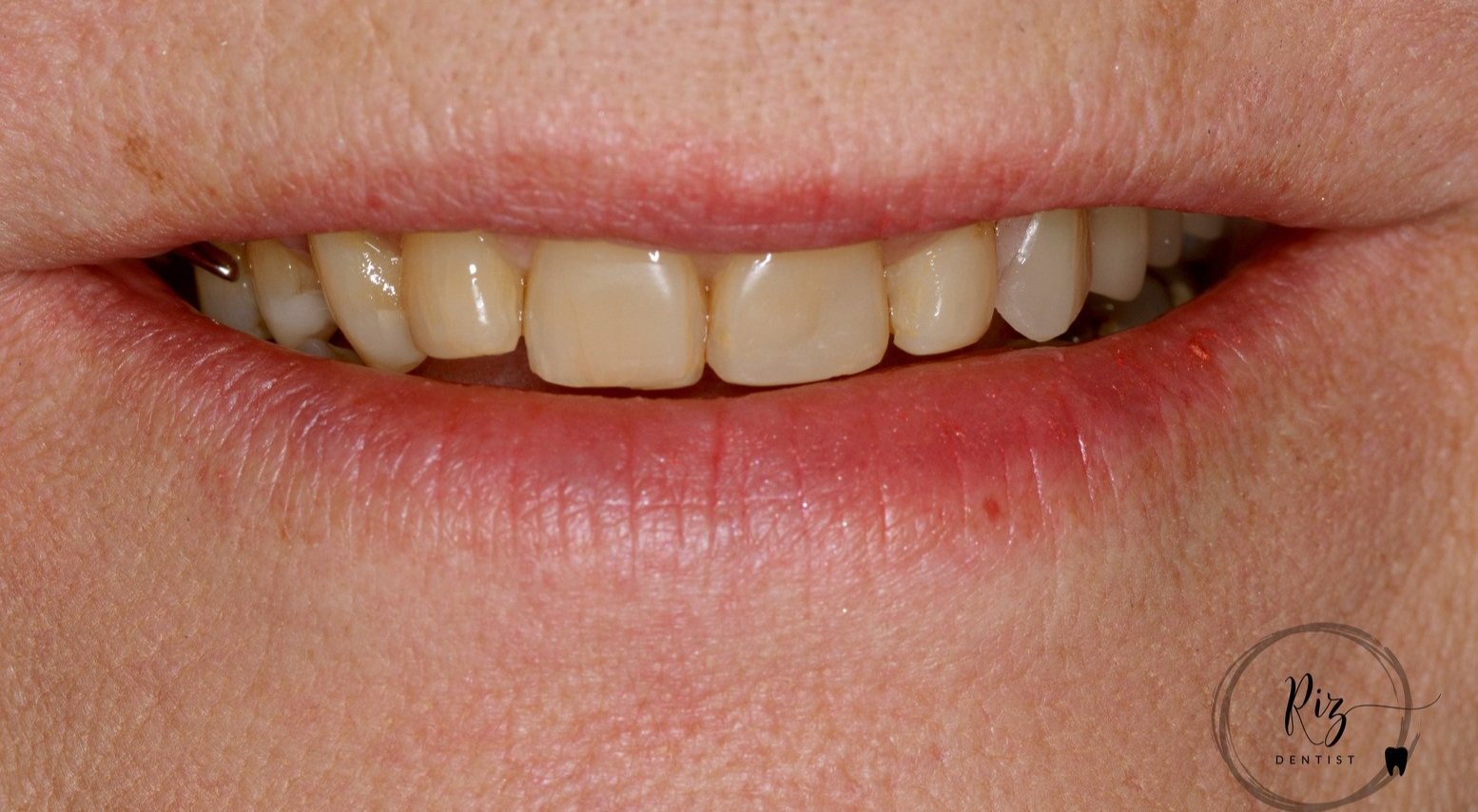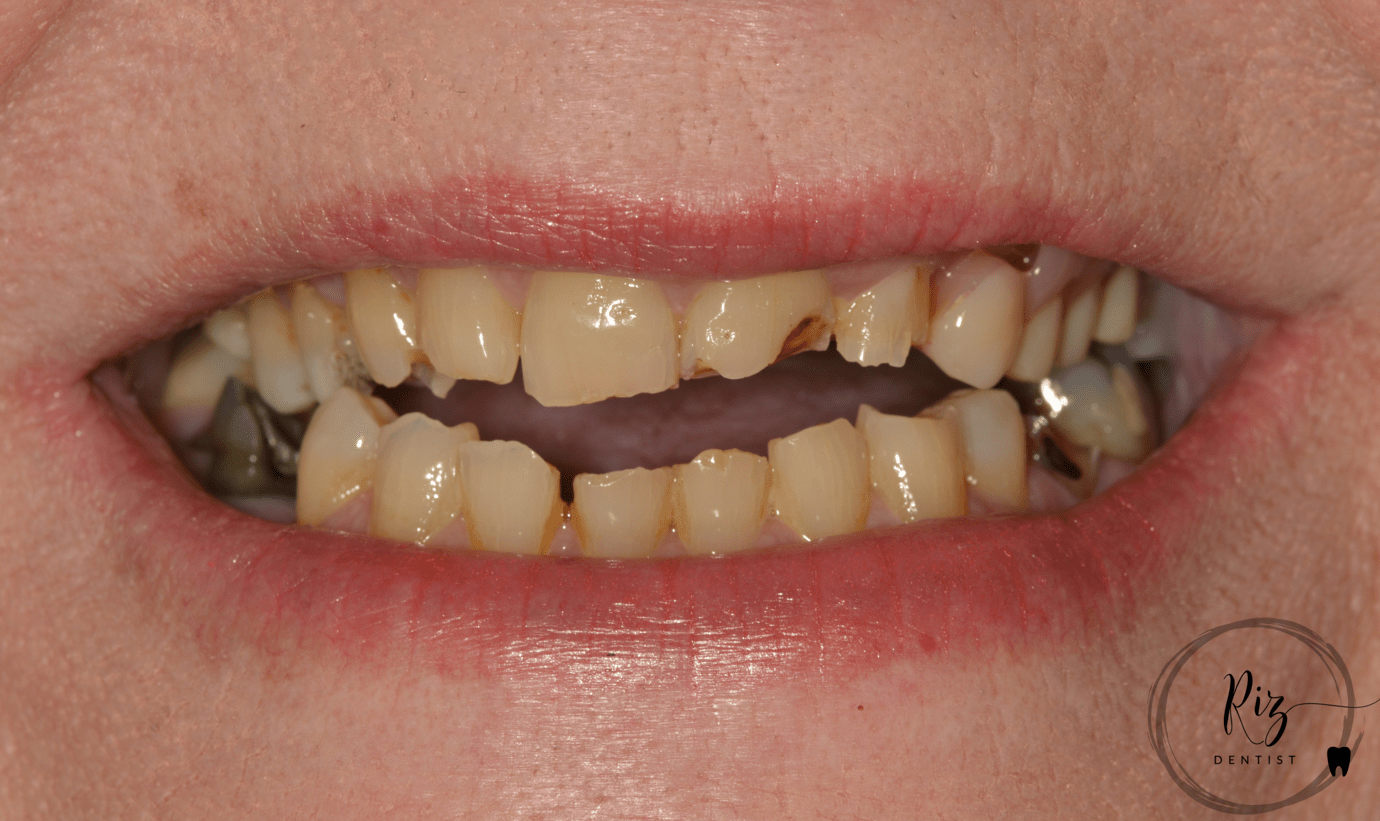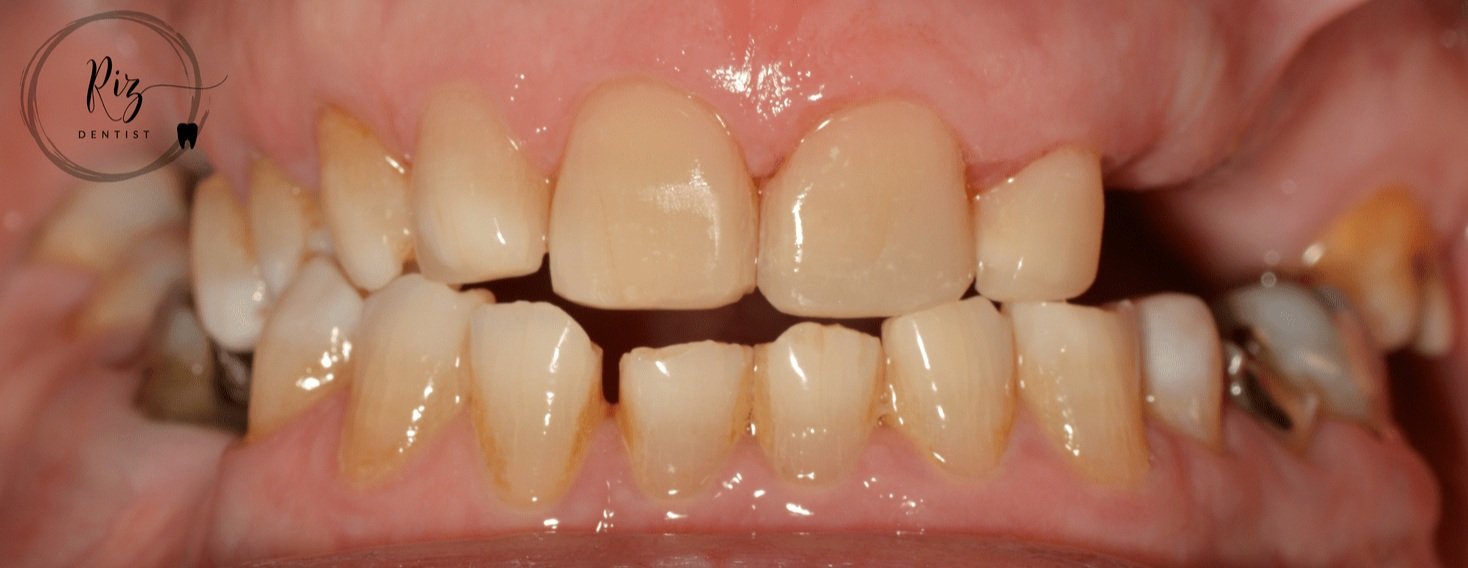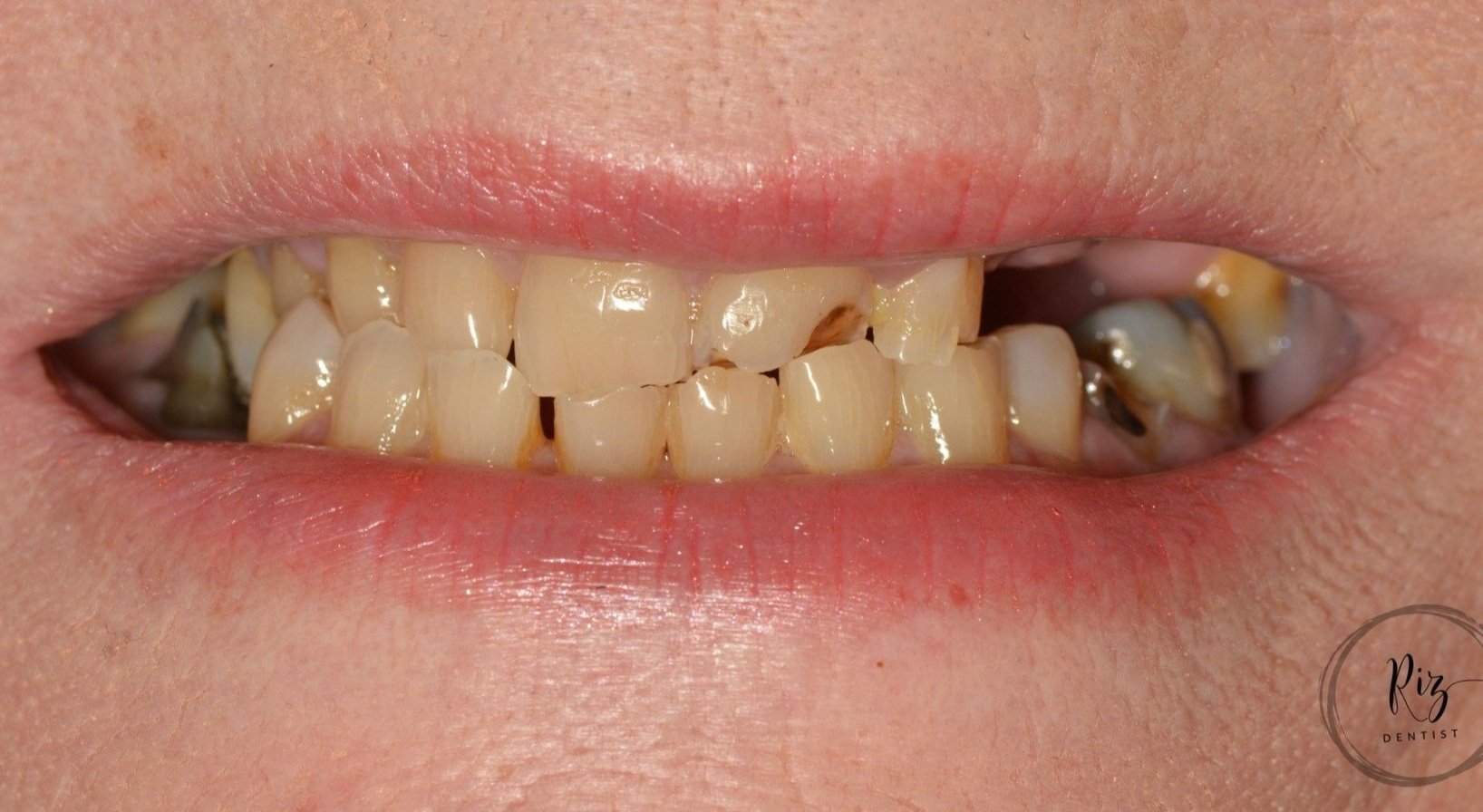Complex issue resolved through a straightforward approach.
Patient's Situation:
The patient traveled from an hour away to seek dental help because local providers were unwilling to address her concerns.
The patient presented with a unique case involving pathway wear, where only a few teeth on one side of her mouth were significantly worn down due to a one-sided habit.
This issue had led to a loss of space as the gums and bone adapted to maintain contact between the teeth.
Treatment Provided:
In a typical case like this, a full mouth rehabilitation would be required, involving changes to the occlusal vertical dimension (OVD) or inter-arch space and, as a result, the length of most of the teeth in the mouth.
To address this challenge, an initial step was taken by extracting a tooth that had a poor prognosis. This extracted tooth was then added to a temporary denture, creating an increased OVD to introduce space in the front of the mouth.
White fillings were used to alter the shape of the teeth. In such cases, these fillings are a temporary measure, allowing the patient to adapt to the change in teeth shape and how they meet.
Typically, after 3-6 months, if the patient tolerates the increased space between their teeth, these white fillings can be converted into crowns, and new dentures can be made. However, due to cost considerations, the patient chose to maintain the composite fillings, despite their vulnerability to fracture, discoloration, and chipping, particularly in individuals with grinding habits.
Outcome:
New dentures were created around the composite fillings.
The patient was highly satisfied with the results.
In this case, the patient's unique dental challenge required a creative approach. The initial step involved altering the occlusal vertical dimension to introduce space, and white fillings were used to change the shape of the teeth. While typically a temporary measure, the patient opted to maintain the composite fillings to manage costs. New dentures were designed around these composite fillings, and the patient was delighted with the outcome. This case underscores the importance of flexibility in treatment planning to accommodate the patient's needs and preferences.
Patient's Situation:
The patient traveled from an hour away to seek dental help because local providers were unwilling to address her concerns.
The patient presented with a unique case involving pathway wear, where only a few teeth on one side of her mouth were significantly worn down due to a one-sided habit.
This issue had led to a loss of space as the gums and bone adapted to maintain contact between the teeth.
Treatment Provided:
In a typical case like this, a full mouth rehabilitation would be required, involving changes to the occlusal vertical dimension (OVD) or inter-arch space and, as a result, the length of most of the teeth in the mouth.
To address this challenge, an initial step was taken by extracting a tooth that had a poor prognosis. This extracted tooth was then added to a temporary denture, creating an increased OVD to introduce space in the front of the mouth.
White fillings were used to alter the shape of the teeth. In such cases, these fillings are a temporary measure, allowing the patient to adapt to the change in teeth shape and how they meet.
Typically, after 3-6 months, if the patient tolerates the increased space between their teeth, these white fillings can be converted into crowns, and new dentures can be made. However, due to cost considerations, the patient chose to maintain the composite fillings, despite their vulnerability to fracture, discoloration, and chipping, particularly in individuals with grinding habits.
Outcome:
New dentures were created around the composite fillings.
The patient was highly satisfied with the results.
In this case, the patient's unique dental challenge required a creative approach. The initial step involved altering the occlusal vertical dimension to introduce space, and white fillings were used to change the shape of the teeth. While typically a temporary measure, the patient opted to maintain the composite fillings to manage costs. New dentures were designed around these composite fillings, and the patient was delighted with the outcome. This case underscores the importance of flexibility in treatment planning to accommodate the patient's needs and preferences.
Patient's Situation:
The patient traveled from an hour away to seek dental help because local providers were unwilling to address her concerns.
The patient presented with a unique case involving pathway wear, where only a few teeth on one side of her mouth were significantly worn down due to a one-sided habit.
This issue had led to a loss of space as the gums and bone adapted to maintain contact between the teeth.
Treatment Provided:
In a typical case like this, a full mouth rehabilitation would be required, involving changes to the occlusal vertical dimension (OVD) or inter-arch space and, as a result, the length of most of the teeth in the mouth.
To address this challenge, an initial step was taken by extracting a tooth that had a poor prognosis. This extracted tooth was then added to a temporary denture, creating an increased OVD to introduce space in the front of the mouth.
White fillings were used to alter the shape of the teeth. In such cases, these fillings are a temporary measure, allowing the patient to adapt to the change in teeth shape and how they meet.
Typically, after 3-6 months, if the patient tolerates the increased space between their teeth, these white fillings can be converted into crowns, and new dentures can be made. However, due to cost considerations, the patient chose to maintain the composite fillings, despite their vulnerability to fracture, discoloration, and chipping, particularly in individuals with grinding habits.
Outcome:
New dentures were created around the composite fillings.
The patient was highly satisfied with the results.
In this case, the patient's unique dental challenge required a creative approach. The initial step involved altering the occlusal vertical dimension to introduce space, and white fillings were used to change the shape of the teeth. While typically a temporary measure, the patient opted to maintain the composite fillings to manage costs. New dentures were designed around these composite fillings, and the patient was delighted with the outcome. This case underscores the importance of flexibility in treatment planning to accommodate the patient's needs and preferences.




